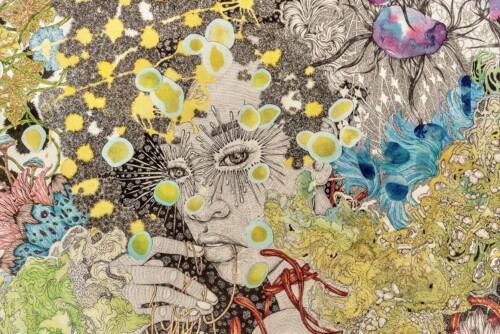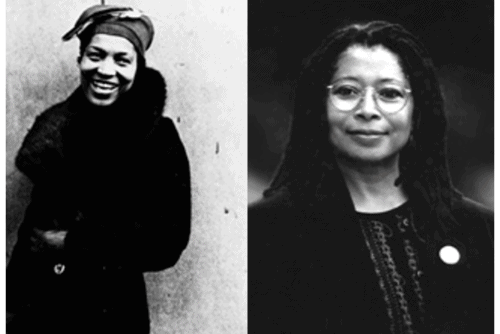Forensic Identification and The Political Care of the Disappeared
Located in the remnants of a once luxurious upper-class house in a crumbling housing-turned-business zone of Guatemala City, the DNA laboratory of the Guatemalan Forensic Anthropology Foundation was visually stunning in contrast with the dilapidated neighborhood. The entrance was guarded by two private police officers carrying large machine guns. A video intercom system allowed access to the lobby, where a secretary sat behind bullet-proof, opaque glass—a set-up common in a city characterized by some of the highest levels of violence in the world. Access to the laboratory was carefully controlled through a biometric security system. Each time a worker entered or left the space, they were required to enter a code and scan their thumbprint to open the otherwise electronically locked door. Across the street a small park stood empty, the one slide rusted into twisted sharp pieces, impossible to use. A woman across the street seeing all the scientists come and go had opened a bodega out of her once luxurious living room, selling homemade refrescos served in knotted plastic bags.
For all new arrivals at the foundation—new workers, searching family members, foreign dignitaries—entry began with a tour of the state-of-the-art DNA laboratory. Large picture windows allowed visitors to peer into each of the nine rooms to watch laboratory staff process skeletal samples recovered from archeological excavations throughout Guatemala. The tour focused less on the work of the foundation in identifying the disappeared of Guatemala and more on the latest techniques they practiced, which were so impressive in their scope and accuracy that the Guatemalan prosecutor’s office routinely sent high-profile cases to the lab. The director often proudly explained that the gleaming lab was the only accredited forensic lab in Guatemala—a status they had worked more than two years to achieve, and that had not even been achieved by the national forensic service. The foundation had invested in the latest technology, including genetic analyzers capable of doing STR and SNP analysis, real-time PCR machines, and amplification equipment. Pointing out certain workers, he demonstrated how this lab had become a regional center not only for the analysis of difficult cases, but also a site of training of young forensic scientists from throughout Latin America. In 2012, the FAFG was participating in a regional training grant to build capacity for forensic DNA analysis for two allied organizations: the Peruvian Forensic Anthropology Team, dedicated to identifying the dead and disappeared of Peru’s internal armed conflict; and the El Salvadorian Probusqueda, which worked to identify children taken by the military and illegally given up for international adoption during the civil war.
Similar tours were a regular feature of laboratory life, and scientists were accustomed to their role as exemplars of human rights identification. In the course of a single week the ambassadors of Sweden, Norway, and the United States were each taken on the same journey. Newspaper reporters and camera crews from local news outlets, regional centers, and even from the Smithsonian came to film the scientists at work. Although the most frequent visitors were high-powered functionaries, the lab also hosted searching family members who came to visit the samples in the evidence locker, to “visit” their loved one they would say. They, too, were treated to a technical explanation of how their family member would soon be identified through the latest technologies available.
Turning quarter-inch samples of bone and tooth from the dead and disappeared of Guatemala into genetic data was a laborious process. The tour of the laboratory emphasized the powerful role of DNA in determining identity, but this was neither the beginning nor the endpoint of the identification process. The Guatemalan Forensic Anthropology Foundation has worked for years to identify clandestine gravesites, collect DNA samples from surviving family members, and exhume and forensically analyze the remains of the dead. The largest project of the foundation is a new initiative to identify the disappeared of Guatemala through massive excavations of the collective burial sites of public cemeteries in Guatemala City, Esquintla, and Antigua. This was a decided shift in focus for an organization that had previously limited its work to the important task of identifying the victims of discrete massacres in rural areas. Surveying cemeteries for unregistered dead had been used with great success in Argentina, where activists found that the armed forces and police had subverted the medical examiner and mortuary system of the state, dumping bodies in state-sanctioned burial sites for the destitute without the proper medical or legal processing.1 In an example of the cross-fertilization of science and terror, the director of the FAFG recognized that Argentine forces had trained the Guatemalan military, bringing similar tactics to urban centers throughout the country, and hypothesized that the bodies of Guatemala’s 40,000 disappeared might also be hiding in plain view. With funding from various European consulates and the US State Department, the foundation began excavating pozos, or deep wells where the indigent dead were routinely buried in mass graves. The result has been the largest forensic undertaking in Latin America, the excavation at La Verbena in Guatemala City. In 2010, the foundation had already analyzed over 10,000 bodies and were working at a depth of 20 meters below ground. Forensic archeologists rappelled down the walls of the five-meter-in-diameter well, to a floor of human bodies, carefully disentangling each set of remains, photographing them, and depositing them in buckets to be hauled up to the surface for further analysis. The conditions were unimaginable, with bodies so tightly packed together that they had failed to fully decompose, leaving bloated figures mingled with bones. Many bodies had become disarticulated, forcing archeologists to send up bags of long bones, leaving only skulls to be individually identified. Roaches and rats added to the unhygienic conditions, prompting workers to wear fully body suits and special air purification masks. In many cases, bodies showed clear indications of government mismanagement and outright torture. Many bodies had no documentation or signs of medical autopsy, although both were required in cases of a suspicious death. Workers described cases where a recovered body still had a blindfold tightly tied around the skull, or ,in a particularly devastating case, a woman with her baby wrapped tightly to her back with a traditional Mayan cloth.
Given the conditions of bodies in mass graves, it is not surprising that the process within the laboratory began with cleaning potential sources of contamination from samples. Debris, dirt, mold, dried blood and skin, and hair—all the detritus accumulated in the 30 years these samples spent in mass graves—were removed by hand, the surface of bones and teeth carefully cleaned with sand paper and a dental drill. At the FAFG, this was the only step of the DNA analysis process that was collective. Six to eight analysts and technicians, dressed in sterile gowns, shoe coverings, and masks, gathered around a laboratory bench to scrape and sand until teeth, pieces of the skull, and long bones gleamed white, despite years of abandonment and decay. A liquid nitrogen freezer mill ground the teeth, bones, and skulls into a fine powder. In the next 48 hours, the bone powder was treated using demineralization agents to transform the white powder into a cloudy liquid. Through 12 hours of manual processing, the DNA in the liquid was then extracted and washed repeatedly. At each step, the volume was decreased until the analyst was left with 12 micrograms of purified DNA. Over the next week the sample was quantified and, if sufficient DNA was found to be the sample, amplified using one of several standard forensic kits (mini-filer, identi-filer, or y-filer) and run through the genetic analyzer.
Each step in this process was carefully coded and circumscribed by standard operating procedures (SOPs) and best practices, guiding each step of analysis. At one point in the middle of the long day, Ana, a mid-level geneticist at the organization held a test tube up to the light. Before pouring it onto the filter, she said, “One of my teachers in college always told me that genetics was a study in faith.” As she transferred the vacufilter to the centrifuge, she clarified her meaning: “you can’t see anything in the tube anymore,” she explained. “We won’t even know if have DNA until next week. Who knows if all of this will lead to anything at all?” On one level she was making a well-known Latourian point about transcription and visualization as modes of scientific authority,2 but turning it on its head as anxiety about the possibility of mechanisms of transcription and visualization functioning at all. Rather than a power struggle in science as combat, for Ana, science became an act of faith.
Meditating on faith, Ana was flagging an aspect of her work in the lab. Although straightforward in the SOPs, the process of identification was inevitably complicated by degraded samples, lack of resources to buy reagents and repair machines, biological phenomena outside of the control of the protocols, and the very practices of disappearance and genocide which had left samples in devastating conditions of comingling, contamination, and degradation. Obtaining usable profiles from 30-year-old bones, although technically possible and routinely practiced in a number of forensic settings, often required multiple extractions. In a country where the average annual income is 2,400 USD, one profile from bone cost almost 1,000 dollars. Even with this significant monetary investment, and months of laboratory work and analysis, many samples failed to produce any usable profile at all. Even with the FAFG’s commitment to reanalyze samples up to three times, an enormous additional expense and investment of time, a full profile of 15 genetic markers often remained elusive, lowering the statistical significance of any potential match made.
To return to the specifics of lab practice, in a set of 16 samples of bone that had been processed for 40 hours already, 10 might precipitate unexpectedly, turning into an impenetrable foam, and rendering the subsequent purification steps null. Because of the requirements of accreditation, the SOP process had to continue exactly as written, ignoring the materiality of foam, which simply would not be filtered in the subsequent steps. Another worker explained that to add additional reagents or change the steps of the protocol could risk their laboratory’s certification. Unusable results were not reason enough to endanger the laboratory’s legitimacy as a global scientific institution.
How can we reconcile this pressure to process in the face of the failure to produce results? In that light, what kind of faith did forensic genetics require? Ana and the other analysts struggled with their alienation from the labor of DNA analysis. And not in the sense of alienation from the humanity of the samples, from the real flesh and blood of the massacred, but from the labor and authorship of scientific research supplanted by a global hierarchy of value that had constructed this space as one of throughput and processing, not creation. Success, in practice, often rested less on a scientist’s ability to innovate or even identify, but rather in the routine, repetitive, daily effort to process samples as a kind of care—care for the dead, care for the past, care for maintenance of “certification” status, and care for democracy.
Returning to Ana’s assessment about genetics as faith, this kind of belief in the power of DNA, of the DNA to be there and be extractable, despite all the evidence of failure, is central to genetics work in forensic laboratories. Moreover it testified to a core belief by human rights organizations, funding groups, and participating family members: careful science practice could and would intervene into the violence and impunity that has characterized the nation. In the face of ongoing violence, deep political failure, death threats, entrenched poverty and discrimination, the laboratory with its glassed-in rooms, genetic sequencers, and white-coated scientists evoked in its visitors a kind of wide-eyed wonder. As a community radio organizer from the Nebaj in the highlands, bilingual in Ixil and Spanish, explained: “It seems impossible that such a thing can exist in Guatemala. I hadn’t given my blood because I thought they were sending it out of the country and it would never return.” Upon learning about the laboratory he vowed to go back and explain to his listeners in this ravaged part of the country that justice had arrived. He saw the local processing of DNA as an answer to the failed process of justice for indigenous Mayans. Although the return and reburial of bodies identified via other forensic methods has occurred in Guatemala for the last 20 years,3 it was the laboratory as an icon of justice and accountability that shifted his position from indifference to excitement. The processing of samples regardless of actual identifications, which was the explicit goal, revealed an additional dimension to the work of Ana and her colleagues: caring for the dead. As one surviving sister of a disappeared man, now in her 40s, who attended an inaugural event for a new excavation site explained, she was offering her DNA sample because this was the first time she had ever felt safe enough to publicly mourn her disappeared brother.
- Gustavo G. Politis and Rafael Pedro Curtoni, “Archaeology and Politics in Argentina During the Last 50 Years.” Comparative Archaeologies, (New York: Springer, 2011): 495-525. http://link.springer.com/chapter/10.1007/978-1-4419-8225-4_14. [↩]
- B. Latour and S. Woolgar, Laboratory Life: The Social Construction of Scientific Facts (Beverly Hills: Sage, 1979). [↩]
- Victoria Sanford, Buried Secrets: Truth and Human Rights in Guatemala, (New York: Palgrave Macmillan, 2003). [↩]




